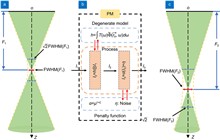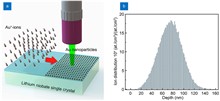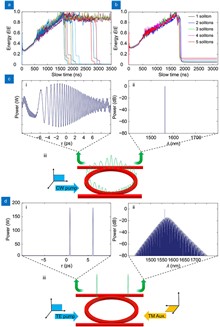 View fulltext
View fulltext
Phase singularities (PSs) in topological darkness-based sensors have received significant attention in optical sensing due to their rapid, ultra-sensitive, and label-free detection capabilities. Here, we present both experimental and theoretical investigations of an ultrasensitive and multiplexed phase-sensitive sensor utilizing dual topological PSs in the visible and near-infrared regions. This sensor uses a simple structure, which consists of an ultra-thin highly absorbing film deposited on a metal substrate. We demonstrate the achievement of dual-polarization darkness points for s- and p-polarizations at different incident angles. Furthermore, we theoretically explain the double topological PSs accompanied by a perfect ±π-jump near a zero-reflection point, based on the temporal coupled-mode formalism. To validate its multifunctional capabilities, humidity sensing tests were carried out. The results demonstrate that the sensor has a detection limit reaching the level of 0.12 ‰. These findings go beyond the scope of conventional interference optical coatings and highlight the potential applications of this technology in gas sensing and biosensing domains.
Liquid crystal Pacharatnam-Berry phase optical elements (PBOEs) have found promising applications in augmented reality and virtual reality because of their slim formfactor, lightweight, and high optical efficiency. However, chromatic aberration remains a serious longstanding problem for diffractive optics, hindering their broader adoption. To overcome the chromatic aberrations for red, green and blue (RGB) light sources, in this paper, we propose a counterintuitive multi-twist structure to achieve narrowband PBOEs without crosstalk, which plays a vital role to eliminate the chromatic aberration. The performance of our designed and fabricated narrowband Pacharatnam-Berry lenses (PBLs) aligns well with our simulation results. Furthermore, in a feasibility demonstration experiment using a laser projector, our proposed PBL system indeed exhibits a diminished chromatic aberration as compared to a broadband PBL. Additionally, polarization raytracing is implemented to demonstrate the versatility of the multi-twist structure for designing any RGB wavelengths with high contrast ratios. This analysis explores the feasibility of using RGB laser lines and quantum dot light-emitting diodes. Overall, our approach enables high optical efficiency, low fabrication complexity, and high degree of design freedom to accommodate any liquid crystal material and RGB light sources, holding immense potential for widespread applications of achromatic PBOEs.
Deep learning (DL) is making significant inroads into biomedical imaging as it provides novel and powerful ways of accurately and efficiently improving the image quality of photoacoustic microscopy (PAM). Off-the-shelf DL models, however, do not necessarily obey the fundamental governing laws of PAM physical systems, nor do they generalize well to scenarios on which they have not been trained. In this work, a physics-embedded degeneration learning (PEDL) approach is proposed to enhance the image quality of PAM with a self-attention enhanced U-Net network, which obtains greater physical consistency, improves data efficiency, and higher adaptability. The proposed method is demonstrated on both synthetic and real datasets, including animal experiments in vivo (blood vessels of mouse's ear and brain). And the results show that compared with previous DL methods, the PEDL algorithm exhibits good performance in recovering PAM images qualitatively and quantitatively. It overcomes the challenges related to training data, accuracy, and robustness which a typical data-driven approach encounters, whose exemplary application envisions to provide a new perspective for existing DL tools of enhanced PAM.
Controlling the construction of physical colors on the surfaces of transparent dielectric crystals is crucial for surface coloration and anti-counterfeiting applications. In this study, we present a novel approach to creating stable physical colors on the surface of lithium niobate crystals by combining gold ion implantation with laser direct writing technologies. The interaction between the laser, the implanted gold nanoparticles, and the crystal lattice induces permanent, localized modifications on the crystal surface. By fine-tuning the laser direct writing parameters, we reshaped the gold nanoparticles into spheres of varying sizes on the crystal surface, resulting in the display of red, green, blue, and pale-yellow colors. We investigated the influence of the implanted Au nanoparticles—particularly their localized surface plasmon resonances—on the modifications of the lithium niobate crystal lattice during the laser writing process using confocal Raman spectroscopy and high-resolution transmission electron microscopy. Our findings reveal that the embedded Au nanoparticles play a pivotal role in altering the conventional light-matter interaction between the crystal lattice and the laser, thereby facilitating the generation of surface colors. This work opens new avenues for the development of vibrant surface colors on transparent dielectric crystals.
We theoretically and experimentally investigate thermal dynamics involved soliton microcomb generation in silicon oxynitride microresonators. Importantly, auxiliary laser heat balance scheme with flexible thermal manipulation is introduced to circumvent thermal instability and the intra-cavity temperature can be tuned from 60 °C to 41.5 °C via the commercial thermoelectric controller. As a result, various perfect soliton states with ultra-smooth spectral envelopes are observed on a well-designed and fabricated microresonator with homogeneous sidewall and thickness where spatial modes interaction and distortion are eliminated. The pre-reported spectral abrupt jumps due to mode hybridization are completely avoided and solitons tail oscillation vanishes simultaneously. This reported ideal coherent comb source without residual temporal and spectral noise will facilitate practical applications such as spectroscopy, ranging and astrocomb calibration.
In a recent study, Prof. Rui Min and collaborators published their paper in the journal of Opto-Electronic Science that is entitled "Smart photonic wristband for pulse wave monitoring". The paper introduces novel realization of a sensor that uses a polymer optical multi-mode fiber to sense pulse wave bio-signal from a wrist by analyzing the specklegram measured at the output of the fiber. Applying machine learning techniques over the pulse wave signal allowed medical diagnostics and recognizing different gestures with accuracy rate of 95%.














